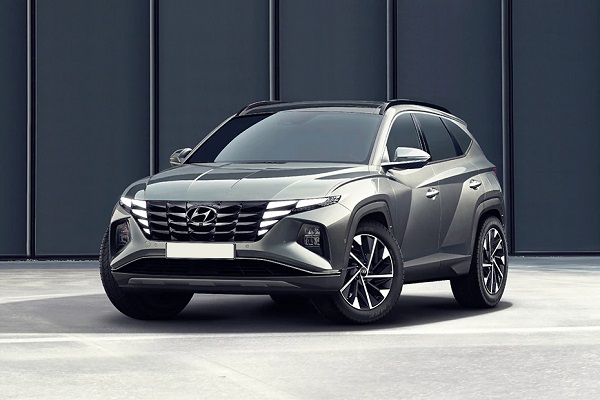Hyundai 2021 Tucson fully revealed, is a radical change in design language


Hyundai has taken the covers off of 2021 Tucson, revealing significant changes to the exterior design language that sets it almost entirely apart from any of its preceding models. The fourth-generation Tucson was launched by Hyundai in its home market of South Korea and will be available in long-wheelbase as well as short-wheelbase variants.
Also check these Cars
The new Tucson takes a completely different road than any taken by its predecessors. Hyundai designers term the design language on the SUV as 'parametric dynamics' which is defined primarily by kinetic jewel surface details which seek to give it a unique identity in a crowded SUV space. The large front grille have the sharp headlights integrated into it and while LED lights are not revealed in any of the accompanying images released by the car maker, these are expected to further accentuate the stylish front profile of the vehicle. The large fog lamps too have a sense of determined purpose here.
(See more pics of 2021 Hyundai Tucson)


From the side, the new Tucson gets rid of sharp and straight body lines for lines which seek to draw triangular shapes in what appears artistically abstract. The wheel arches are rather angular while the swept-back roofline is done in contrasting hues of black.


The new Tucson's rear profile is perhaps the smartest with blade-like light strip connecting the brake lights on either side. The brake lights themselves are claw-like which seek to give the car an aggressive back appeal. The lower rear bumper has a diamond texture while the wiper gets covered from view under the rear spoiler.


2021 Tucson has an extremely distinct and strong visual presence from the outside and the only reason it may take some getting used to is perhaps because of the mammoth changes it embraces. And the changes are not just on the outside.
Step inside the new Tucson and be greeted with a cabin that puts a clear emphasis on being contemporary even if that emphasis is not too jarring. Hyundai says the idea has been to offer a sense of connected and comfortable drive in a cabin that is open and simplistic. The broad ridge of the dashboard blends consistently with the doors, wrapping around front occupants. The vertically oriented, fully integrated center fascia descends to the console while the ambient mood light feature allows one to adjust the 64 colours for 10 brightness levels.


In terms of technology, the new Tucson packs in three new features - a vertically stacked, dual 10.25-inch full-touch screen exempt of hard buttons, a multi-air ventilation system and an open, hoodless digital gauge cluster.
Additionally, the SUV's second-row seats will feature fold-and-dive functionality for optimized reconfiguration capability between passengers and cargo.
Under the hood, the new Tucson will make use of a 2.5-litre petrol and a 1.6-litre turbo hybrid engine. These are mated to an eight-speed automatic transmission unit.
The 2.5-litre engine has peak power of 187bhp and max torque of 246 Nm. The turbo hybrid has a combined peak power figure of 226 bhp and max torque of 264 Nm.
The new Tucson continues to make use of Hyundai's HTRAC all-wheel-drive system which supports Eco / Comfort / Smart / Sport driving modes but now also get additional support for Mud, Sand and Snow. The additional drive modes, however, are for the car in select markets only.
Overall, Hyundai has gone the extra mile - and then some more - to radically update the latest Tucson in a bid to further stamp its dominance in the mass-market SUV field of play. The car appears to not just take on its rivals but also attempts to stand apart from its own predecessors.








 1999 cc
1999 cc Petrol
Petrol



















